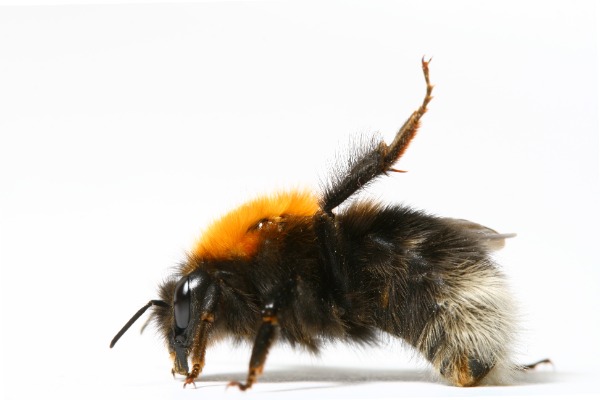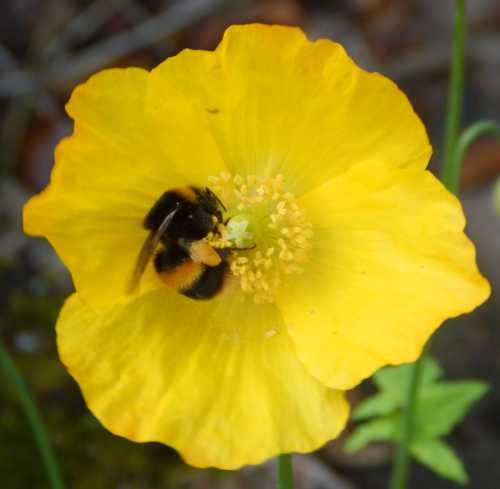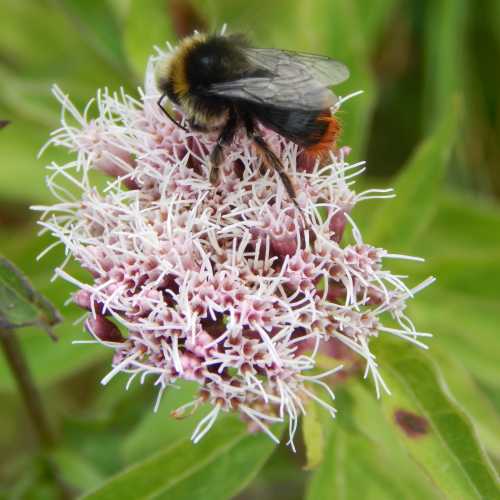Bombus sylvestris
– The Forest Cuckoo Bee
Bombus sylvestris – the Forest cuckoo bee, is found widely in Britain.
Bombus sylvestris - Appearance And Life Cycle
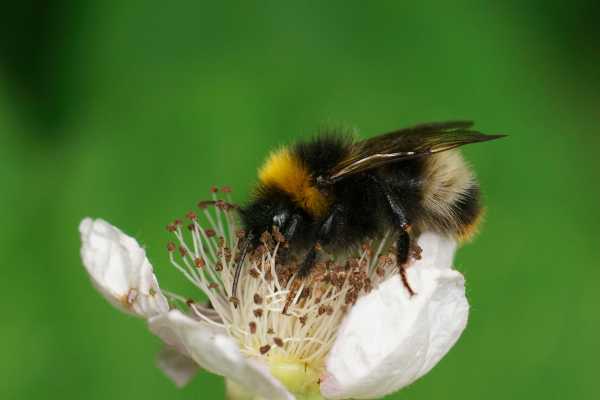 Forest cuckoo bumble bee, Bombus sylvestris male, on bramble flower, Rubus fructicosus - note black and ginger tip to the tail
Forest cuckoo bumble bee, Bombus sylvestris male, on bramble flower, Rubus fructicosus - note black and ginger tip to the tailFemales typically measure around 15mm in length whilst males are a little smaller at about 13mm1.
Most commonly, males and females have one yellow 'collar band' on the thorax, with a few pale/yellow hairs at the midriff.
The abdomen is black with a white tail and strongly downcurved in females. Males are variable, but can often be identified by a black and ginger tip to the abdomen.
Look out for the Forest Cuckoo bee from around March onwards when females emerge, followed by males around April time, but later in cooler regions.
Falk suggests that this cuckoo bumble bee species mainly attacks the nests of Bombus pratorum and possibly Bombus jonellus, and Bombus monticola1.
Other study resources suggest that Bombus sylvestris also targets B. hypnorum, and further potential hosts could additionally include B. hortorum and B. soroeensis3.
In line with it's main target host, the bivoltine Bombus pratorum, Forest cuckoo bees may attempt to raise two generations of offspring per year in warmer, so that new females may appear through summer until September1.
All cuckoo bumble bee species rely on their chosen host species in order to rear and provide for their offspring in terms of a nest and provision of nourishment. Workers of the host species will naturally also perform additional tasks, including helping to defend the colony and keeping the nest clean.
There are reports of Bombus sylvestris cohabiting with the host species, with both host and cuckoo producing offspring (Benton, citing Hoffer and Kuepper & Schwammberger2).
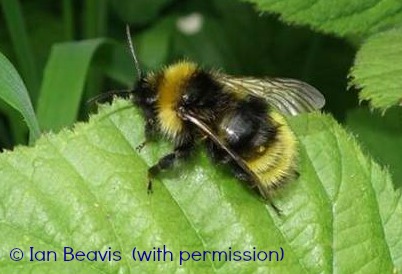 Above - Bombus sylvestris male - image courtesy of Ian Beavis. Common form has a white tail.
Above - Bombus sylvestris male - image courtesy of Ian Beavis. Common form has a white tail.Habitat
As with all cuckoo species, they can be found in the same habitats as their target hosts, which for Bombus sylvestris is varied but is more likely to include wooded habitats than other Bombus species1.
Foraging
If you want to see the Forest cuckoo bee, look out for them foraging on:
sallow,
white deadnettle,
bramble,
lavender,
globe thistle,
white clover,
buttercup,
horse chestnut,
dandelion,
crab apple,
Mahonia,
devil's-bit scabious,
creeping thistle,
meadow cranesbill,
thyme,
knapweed,
bugle,
viper’s bugloss,
hound's tongue,
Bilberry,
and mallows.
Status
The IUCN regards populations of Bombus sylvestris as 'stable', and as being a species of 'Least Concern' (LC)3.
The IUCN status of confirmed hosts is as follows3:
- Bombus pratorum - LC - Increasing
- Bombus jonellus - LC - Stable
- Bombus hypnorum - LC - Increasing
- Bombus monticola - LC - Decreasing
References
1. Field Guide to the Bees of Great Britain and Ireland by Steven Falk, Bloomsbury 2015.
2. Benton, Ted. Bumblebees: The Natural History & Identification of the Species Found in Britain. Collins 2006.
3. Dozier, A.E., Straw, E.A. & Stanley, D.A. (2023) Systematic review of cuckoo bumblebee research reveals data gaps and understudied species. Ecological Entomology, 48(6), 636–649. Available from: https://doi.org/10.1111/een.13260
